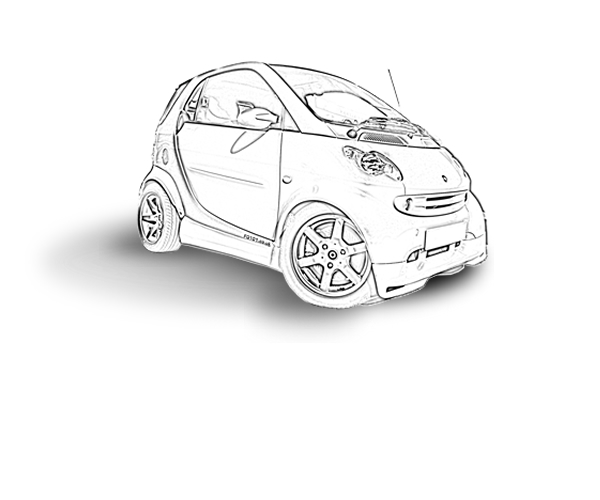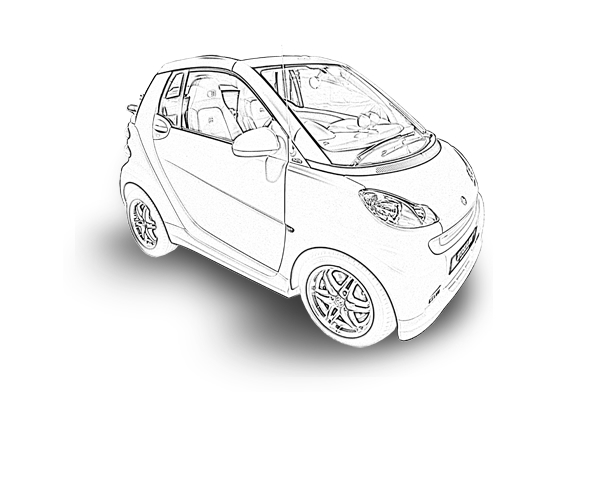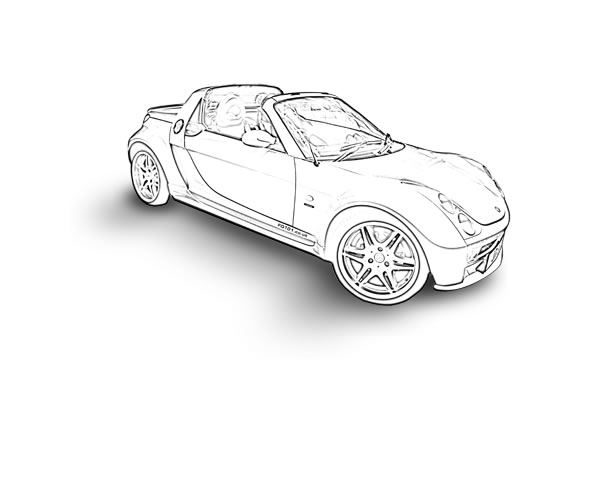Remove the radio by using the removal clips. If you cannot find your clips any more, use alternative radio removal clips.
Slide the radio out and disconnect the aerial, power and speaker connectors. Remove the radio from the car.
If you have a trip computer, you need to free this by pushing the two clips as shown:
Unplug the white ribbon cable from the right-hand side.
If you don't have a trip computer, you will need to trace the pod cable down through the back of the console and disconnect it from the cable adaptor.
Remove the safety triangle by lifting it up from the front and disconnecting the wiring.
The pods secure to the dash with two T10 screws that need to be removed.
The pods are held with four additional clips. Pulling the pods up vertically will free them from the car.
Take the pod assembly out of the car to where you will be soldering.
Each pod is held in place with two T8 screws that need to be removed.
As the pods come free, unplug the red connectors from each pod. The main cable supplies the boost pod which is then linked across to the temperature pod underneath the base plate hence the need to disconnect them.
With each pod free, remove the front bezel. Do this carefully as the clips are very brittle.
Remove the two T6 screws either side of the face.
The internals of the temperature pod should fall out of the enclosure quite easily. The boost may need some gentle persuasion.
Remove the needles by twisting them firmly anticlockwise and pulling. Move the boost needle to the -1.0 position before doing this.
The dial faces will simply lift off the spindle to reveal the LEDs on the PCB.
When the lighting circuit was designed for the pods, they used amber and red LED's which have a 1volt drop accross them.
When changing the colour this must be taken into account. Many people have tried to replace the LED's and failed due there not being enough voltage to drive the circuit.
In this How2 we will be using blue LED's which have a 3volt drop accross them.

Starting with the boost gauge, remove all LED's from the PCB by gently heating the tabs at the base of the LEDs. If you want to keep a red needle, then leave LED 4 in place.
Using a small length of tinned wire, uninsulated, short out pads numbered 1,2,6,and 8.
Solder 3,4,5,and 7 as they were originally. I find it easiest to tin the contacts of the new LED, and tin the pads, then position the LED and gently apply the iron. If you switch sides quickly enough, the solder will remain soft and the LED will settle into place and make a good contact.
When soldering 3 into place, feather some narrow gauge wire and sandwich between the pad and the LED, this is where we will take our feed for the remaining diodes.
Turn the new LED for 8 over, and solder the cables from 3, ensuring that they attach with the same polarity, we want the remaining LED's to be wired in parallel so that the voltage remains high enough to power them effectively.
From 8, go to 1, from 1 to 2, and finally from 2 to 6


During the testing phase I used a small ball of blu tak to hold the LEDs in place on the circuit board, once complete I replaced this with some padded double sided tape.
I chose that sequence of wiring because between 3 and six o'clock there is plenty of space for the extra parallel wires. Be careful not to foul the needle area with the new wiring.
When complete your boost gauge should look similar to the pic above, re-assemble and go and test it in the car, you do not need to plug the temperature gauge in, or secure the pod to the base for testing.
If all connections are made well then all LED's will light and your finished gauge should look something like this:

You may want to experiment with positioning the LEDs to get the best end result.
The temperature gauge is much more simple to do.
Again, de-solder the LEDs from the PCB, leaving LED 2 if you want to keep a red needle. DO NOT de-solder LED 6, this is the redline illumination.

Short pads 1 and 5, and feather in some wire between pad 4 and the LED. Then parallel from 4 to 5 and from 5 to 1.
If we were to stop there, the redline illumination would 'leak' into your new colour, so we need to mask the area off.
Take the black card and cut a strip, leave a tab that can be folded at 90 degrees to the strip for securing to the back of the dial face, secure with some double sided tape.

If all connections are made well then all LED's will light and your finished gauge should look something like this:

Again, you may want to experiment with positioning the LEDs to get the best end result.
When reassembling the pods, it is difficult to know where the correct pointer positions are, especially for the boost gauge. The optimum method is as follows:
Temperature Gauge
- Fit the needle so that it points to 70degrees.
- Twist the needle anticlockwise until it meets some resistance. This is the 0 position.
- Carefully twist the needle further so that it truly points to 0.
Boost Gauge
- Fit the needle so that it points to -0.5bar.
- Twist the needle anticlockwise until it meets some resistance. This is the -1.0 position.
- Carefully twist the needle further so that it truly points to -1.0.
Don't worry about lining the needles up with the zero positions before you put them in the car. When you switch the car on and off, they should both return to zero.

























